Three thousand years ago, during the Shang and Zhou dynasties, various types of sauces appeared, some of which were made from soybeans. In ancient times, soy sauce was called sauce juice. The term soy sauce first appeared in Gao Lian’s Zun Sheng Ben Jian of the Ming Dynasty.
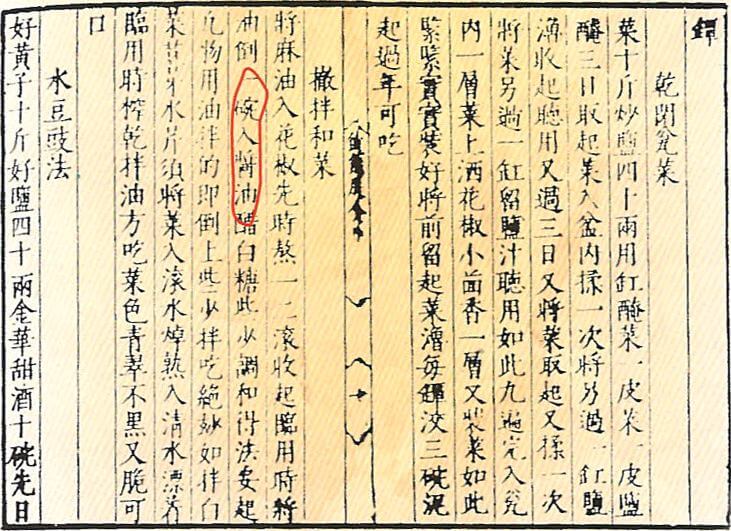
How soy sauce is made
The production of soy sauce can take anywhere from 30 days to months or years, according to cooking technologies that differ from region to region . Soybeans or defatted soybean meal are soaked in water and then cooked in a large pot. Cooking time, as well as temperature and pressure, affect the final product. Defatted soybean meal is cheaper and ferments much faster than whole soybeans. Whole soybeans with more oil and a longer fermentation time result in a smoother, softer and more complex flavor. Longer fermentation also increases the amount of glutamic acid, which is the main component of the umami taste.
Cooked soybeans are mixed with roasted wheat while still warm. The ratio varies depending on the style of soy sauce and the recipe. The degree of wheat roasting has an important effect on the resulting taste of soy sauce. Many soy sauces use wheat flour directly, or wheat bran, or rice flour to remove the wheat gluten. The main purpose of using wheat flour or wheat bran in Chinese soy sauce is to start fermentation.
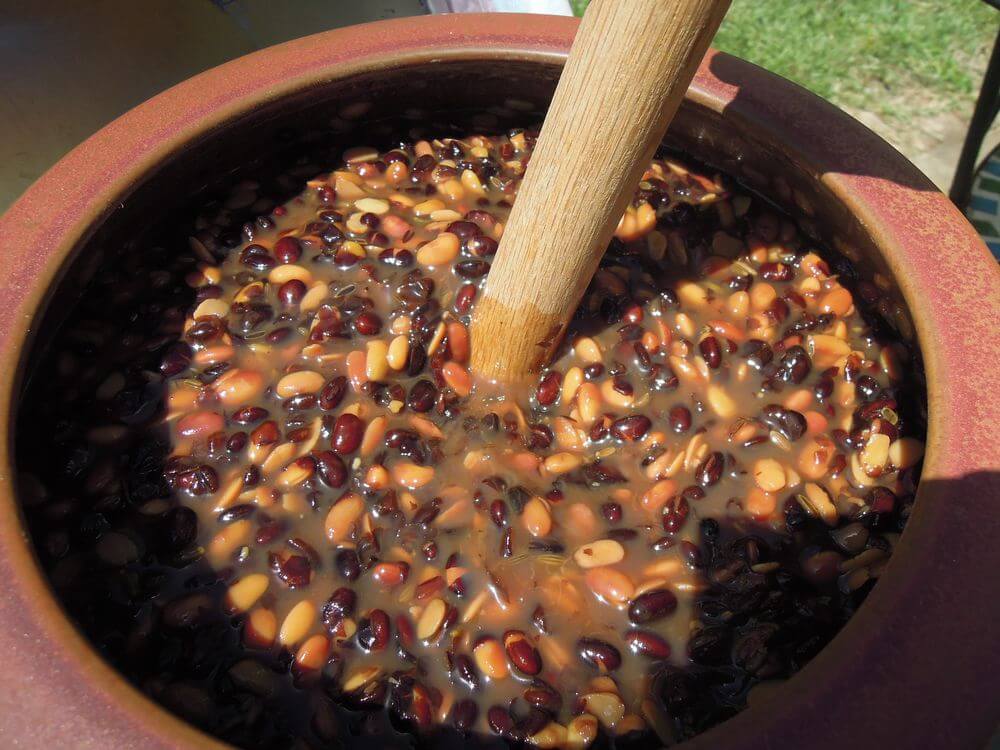
The mixture is inoculated with a proprietary mold and incubated in large perforated vats where air is circulated to ensure the correct temperature and humidity. After a certain period of incubation, the mold covers the entire mass, which turns green due to sporulation. The incubation period ranges from one to seven days. Soybean pulp, called “koji” in Japanese, contains a rich amount of enzymes necessary to break down the starch, proteins and oils of the seeds.
Fermentation
The soy mass is transferred to fermentation tanks, where it is mixed with a certain amount of salt solution for wet fermentation or coarse salt for dry fermentation. Over time, fungal enzymes on soybeans and wheat break down proteins into amino acids including glutamic acid, starches into sugars, and seed oils into fatty acids, some of which are further fermented into lactic acid and alcohol. Lactic acid bacteria and yeast cultures may be added to promote fermentation. Historically, the resulting mash was allowed to ferment naturally in large vats in the sun.
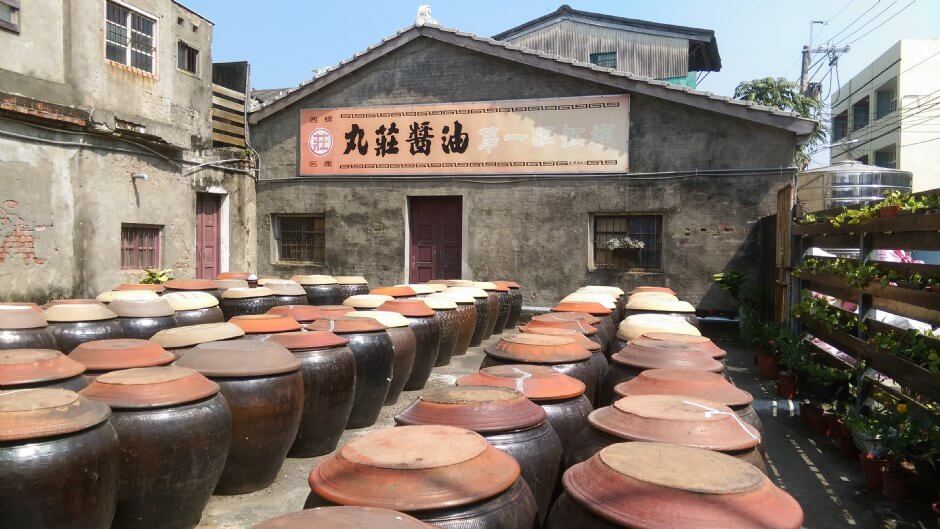
Today, the production of soy sauce has been modernized. He transfers the mixture to an incubation tank with controlled temperature and humidity. This fermentation process, which lasts anywhere from 30 days to several months, in some cases several years, creates more than 300 different flavoring substances that determine the flavor profile of soy sauce. After fermentation, the raw soy sauce from the fermented mash is aspirated or pressed. It is then heated not only to create another layer of flavor as the reaction between the amino acids and sugar is encouraged, but also to stop further fermentation. By high-temperature pasteurization, the soy sauce is ready for bottling and consumption.
The saltiness of the soy sauce
Salt is added at the beginning of fermentation in an amount of approximately 12-18% of the weight of the finished product. Salt helps create the right chemical environment for proper fermentation. A high concentration of salt is also necessary to protect the finished product from spoilage unless additional sugar or alcohol is added.
In artisanal production, the soy sauce is removed from the fermented mash by placing a bamboo mesh cylinder in the center of the fermentation vat, from which the raw soy sauce is pumped out over a period of time.
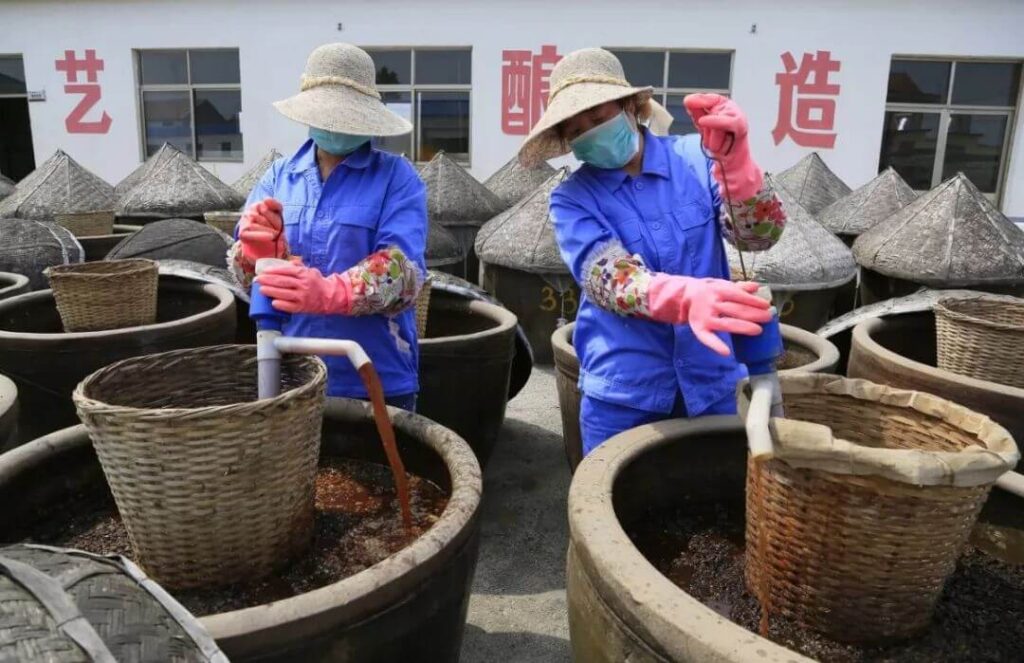
After the first batch of extraction, salt and water are added to the vat to restart fermentation. After a certain time, a second extraction is performed.
Soy sauce quality
The quality of the first extract is the best and is marked as “Premium” (特级) or “Touchou” (头抽). The second extract is called “Gold Label” (金校). The third extract can be bottled as “Silver Label” (银校), or used to make dark soy sauce, or recycled back as brine for the next batch.

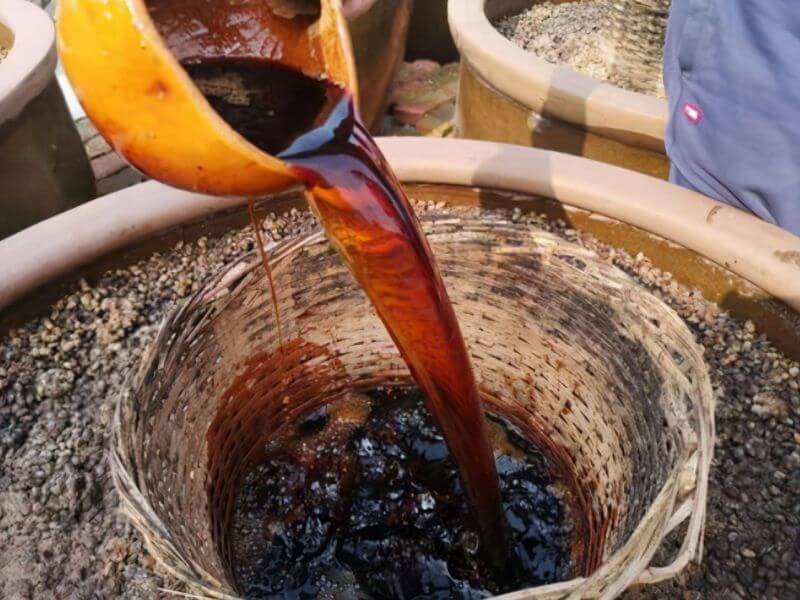
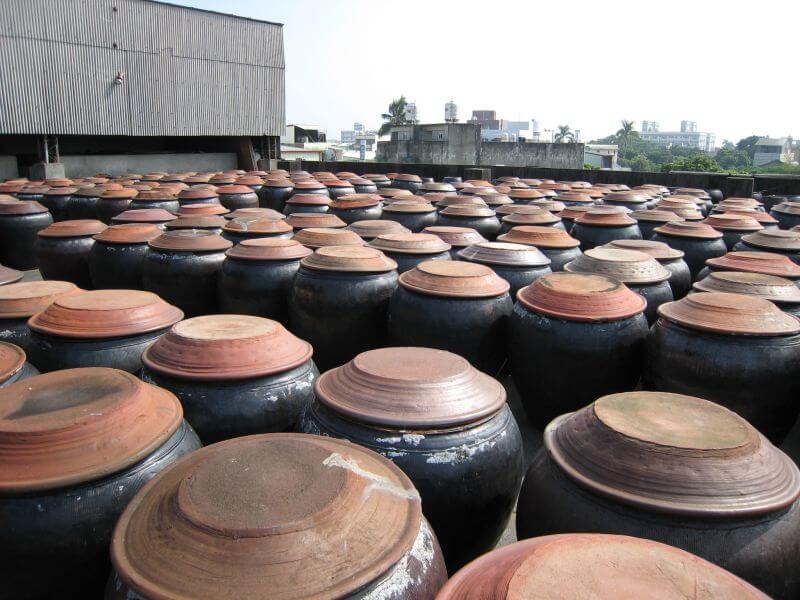
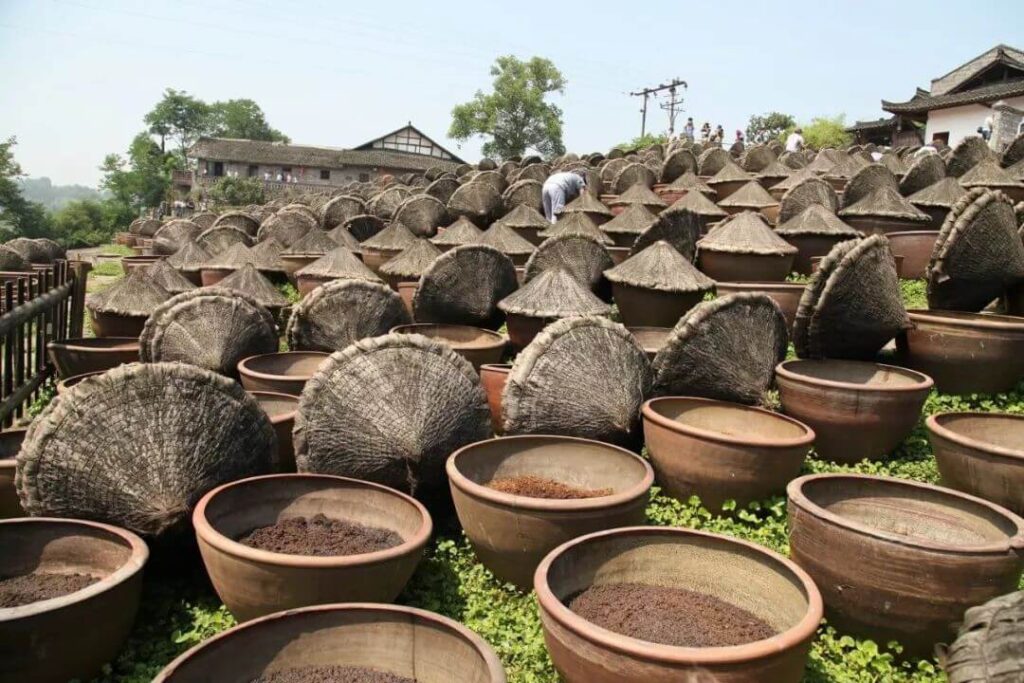
Soy sauce is part of the traditional cuisines of many Asian cultures. Despite their relatively similar appearance, soy sauces produced in different cultures and regions vary widely in taste, consistency, and saltiness. There are literally hundreds of types of soy sauce , which are divided into several different categories, which are usually achieved due to different production methods, length of fermentation, ratios of ingredients or the addition of other ingredients.






